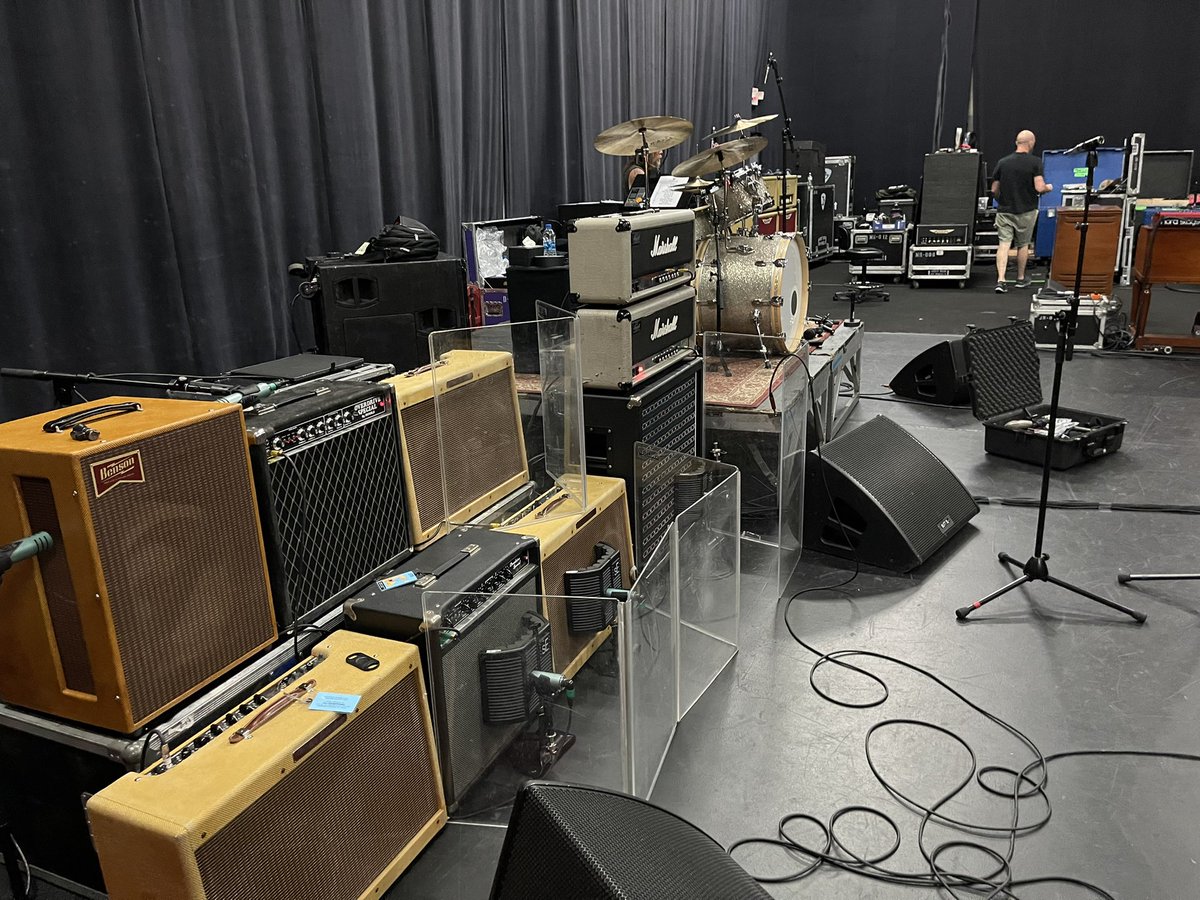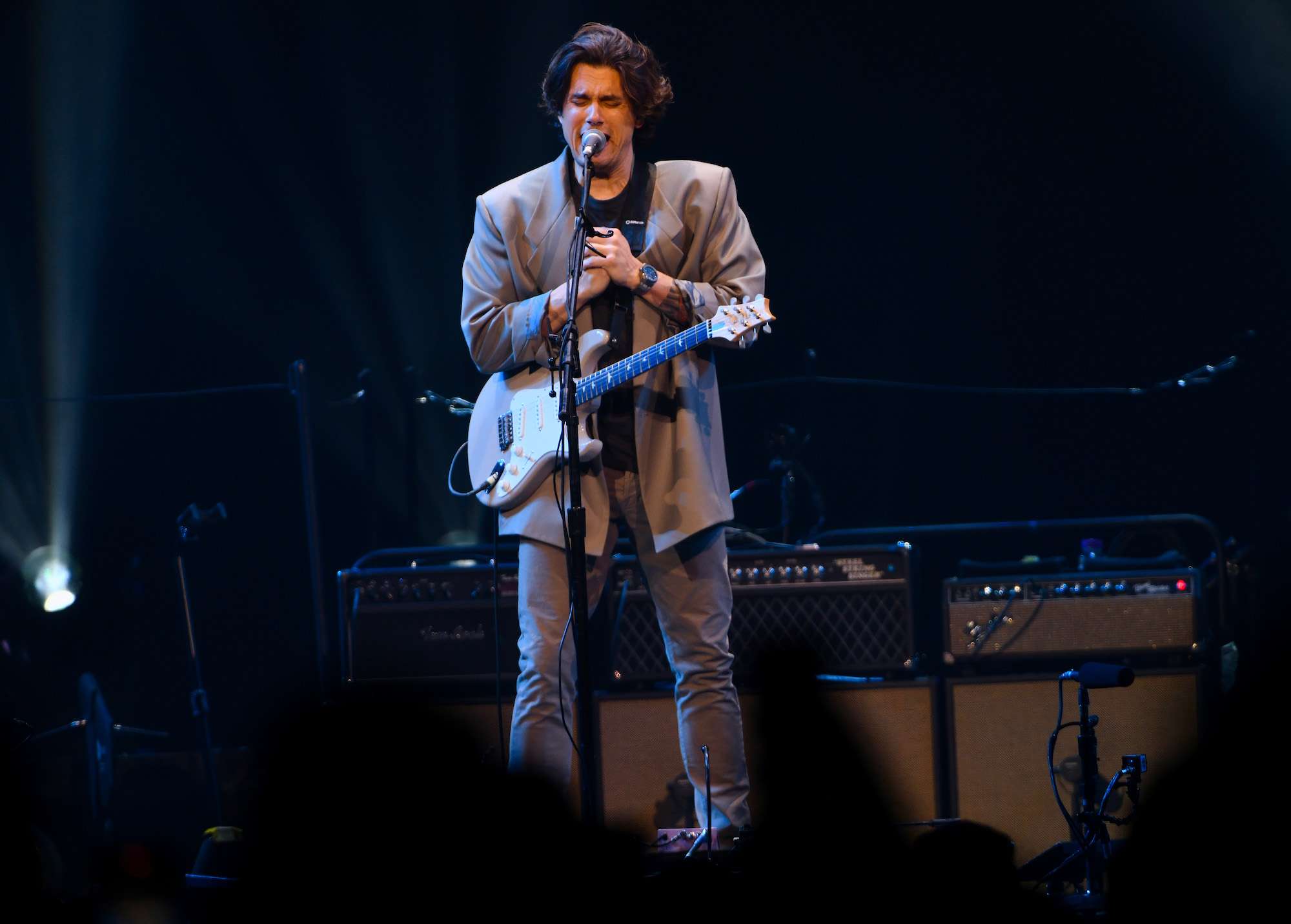paulraphael
Active Member
Thing that seems funny about the tube amp religion among guitar players, is that when they need more than just a touch of distortion, they use a pedal. And almost all the favorite distortion pedals use transistors.
Seeking logic in much of human behavior, thought or actions is most often unproductive.Thing that seems funny about the tube amp religion among guitar players, is that when they need more than just a touch of distortion, they use a pedal. And almost all the favorite distortion pedals use transistors.
With a tube amp on the edge of distortion, all it takes is a stronger signal to push it into overdrive. The effects pedal isn't there to add distortion, it's there to boost the guitar signal, thereby increasing the distortion from the tube amp. Even though it seems like the distortion came from the pedal, those pedals are just clean boost pedals.Thing that seems funny about the tube amp religion among guitar players, is that when they need more than just a touch of distortion, they use a pedal. And almost all the favorite distortion pedals use transistors.
I've definitely seen that. I saw a $100 capacitor for sale for a Les Paul guitar because it was 'vintage' - just pure stupidity.Another place that mumbo-jumbo creeps into the guitar world: the fetishization of everything being original. The idea that any "vintage" instrument (hilarious when we're talking about stuff that's younger than half the members of this board) will be devalued by any attempt at refinishing or replacing worn parts.
Clean boost pedals exist, but I'm pretty sure that's not what most guitarists are talking about. The ones people covet and hoard and argue about are distortion sources, all somewhere on the spectrum of "overdrive," "distortion," and "fuzz." Tube versions do exist ... but they're the minority, and as far as I can tell are not always at the top of people's lists.With a tube amp on the edge of distortion, all it takes is a stronger signal to push it into overdrive. The effects pedal isn't there to add distortion, it's there to boost the guitar signal, thereby increasing the distortion from the tube amp. Even though it seems like the distortion came from the pedal, those pedals are just clean boost pedals.
Well, again, a fuzz sound or solid-state distortion sound is never going to come from a tube amp, so if you want that sound, you get it from a pedal.Clean boost pedals exist, but I'm pretty sure that's not what most guitarists are talking about. The ones people covet and hoard and argue about are distortion sources, all somewhere on the spectrum of "overdrive," "distortion," and "fuzz." Tube versions do exist ... but they're the minority, and as far as I can tell are not always at the top of people's lists.
Wouldn't a low wattage (1 watt) amp or one with variable wattage (1/5) allow for this amp distortion at lower volumes?b) to simulate the sound of an amp pushed to distortion at a lower volume than would otherwise be necessary to distort the amp on its own (distortion box).
Yes, many folks have used very low wattage amps in the studio to do just that. Back in day, Ron Wood with Rod Stewart was using small 1950s Fender amps like a Princeton (5 watts), listen to "Im Losing You" on EPTS or EC on Layla used an old Champ (4 watts) for much of his lead playing, both have small @15 watt Jensens (8", I believe). Both are single ended, one 6V6 as power tube. Great in the studio, but lost on stage.Wouldn't a low wattage (1 watt) amp or one with variable wattage (1/5) allow for this amp distortion at lower volumes?

The guitarist in my old band used to play through a plain old Fender Twin Reverb (~80 watts? A couple of 12s?)Manipulating the gain stages, one can get classic Fender Blackface to Marshall (ABB, Cream, Free...) tone at reasonable levels versus a cranked 100 watt Marshall, which will get you thrown out of a bar/club.
This forum is less open to feelings...
Wouldn't a low wattage (1 watt) amp or one with variable wattage (1/5) allow for this amp distortion at lower volumes?
Not this guy, Bonamassa:Yes, in fact plenty of people tour with 15w or less tube amps




Yes, many folks have used very low wattage amps in the studio to do just that. Back in day, Ron Wood with Rod Stewart was using small 1950s Fender amps like a Princeton (5 watts), listen to "Im Losing You" on EPTS or EC on Layla used an old Champ (4 watts) for much of his lead playing, both have small @15 watt Jensens (8", I believe). Both are single ended, one 6V6 as power tube. Great in the studio, but lost on stage.
Most players will tell you that the power necessary to push a cab with 12" speakers satisfactorily needs to be in the 20 watt plus range. As Tim (the video guy) points out correctly, the speaker and cabinet make a huge difference in tone. Touring pros who use amps like Dumble and their clones, Soldano, vintage Marshalls favor 100 watt amps over lower output versions for the depth of sound and bass control they have over say 50 watt versions of the same circuit/model, even if they attenuate them.
FWIW, have a new amp from Carr, a small builder in NC, called a Mercury V (photo below) that is 20 watts, with huge gain structure flexibility to stack or run in parallel 2 gain stages a switch to up voltages at 3 levels to increase preamp break up, a 12" speaker and it has switchable attenuator that pads the output to 4 watts down to 0.5 watts for studio/living room use. It also has a line out that captures the amp's gain that can be hooked up to record or to a PA for performance at very low stage volume. Did that latter once...like kissing you sister. Great combo amp with stock Celestion Creamback and sweet reverb circuit. Manipulating the gain stages, one can get classic Fender Blackface to Marshall (ABB, Cream, Free...) tone at reasonable levels versus a cranked 100 watt Marshall, which will get you thrown out of a bar/club.

As soon as my custom Aluminati guitar arrives, I'll be giving Mr. Carr a call!Spoke - A lot of guys like the Telestar model, smaller, more range in master volume, multiple output tube choices for voicing and output levels. One I heard had more sparkle/chime than the Merc V, which does the Plexi lead thing (not the fuzzy later Marshalls).
At lower output is the Super B model, tops out at 10 watts. Never played one.
Steve Carr is doing some cool stuff adapting to a low volume world.
Never heard of them. Looked them up, remind me of the 1970s Travis Bean I checked out..played great, looked cool, but I was a broke student.As soon as my custom Aluminati guitar arrives, I'll be giving Mr. Carr a call!

Ordered the Orion "Dark Matter" but customized to be truly all black non reflective (black anodized hardware) in my home theater when the lights are off but the projector is on - a vanity piece for my channel so I can say the guitar was "Designed for Home Theater" playing while watching a movie LOL.Never heard of them. Looked them up, remind me of the 1970s Travis Bean I checked out..played great, looked cool, but I was a broke student.
The Aluninati that's shaped like a Jr and has a plexiglass body with chambers looks cool. At 7.5 lbs is reasonable versus the Dan Armstrong Ampeg one that was also created in the 1970s (Keef played one for a while). Those beasts weighed a ton.
Which model have you ordered? I'm social conservative when it comes to guitars, wood is what I love. Played this last night at a local joint, very traditional, made by artists in Austin through that Gator covered Carr:

